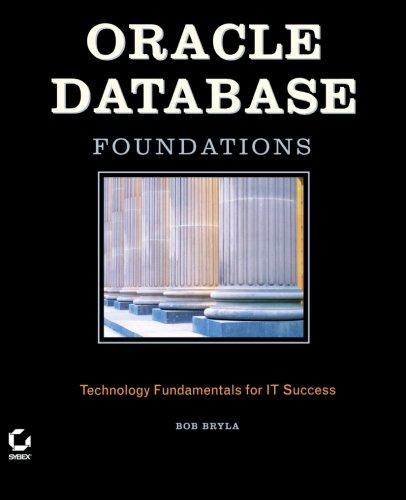Question
Given an instance of a LinearProbingHashST, which is written below, the key type is String and where the length of the table is set at
Given an instance of a LinearProbingHashST, which is written below, the key type is String and where the length of the table is set at 31, list the indices and contents in the keys array once the following strings have been inserted in this order:
"hello"
"hEllo"
"heLlo"
"helLo"
"HellO"
"hELLO"
"HeLLO"
"HElLO"
"HELlO"
"hELLo"
Please provide written answers of the form:
"hello": index
"hEllo": index
"heLlo": index
"helLo": index
"HellO": index
"hELLO": index
"HeLLO": index
"HElLO": index
"HELlO": index
"hELLo": index
Number of collisions: value
LinearProbingHashST JAVA file:
public class LinearProbingHashST {
private static final int INIT_CAPACITY = 4;
private int N; // number of key-value pairs in the symbol table
private int M; // size of linear probing table private K[] keys; // the keys
private V[] vals; // the values
// create an empty hash table - use 16 as default size
public LinearProbingHashST() {
this(INIT_CAPACITY);
}
// create linear proving hash table of given capacity @SuppressWarnings("unchecked")
public LinearProbingHashST(int capacity) {
M = capacity; keys = (K[]) new Object[M];
vals = (V[]) new Object[M];
}
// return the number of key-value pairs in the symbol table public int size() { return N; }
// is the symbol table empty?
public boolean isEmpty() { return size() == 0; }
// does a key-value pair with the given key exist in the symbol table?
public boolean contains(K key) { return get(key) != null; }
// hash function for keys - returns value between 0 and M-1
private int hash(K key) {
return (key.hashCode() & 0x7fffffff) % M;
}
// resize the hash table to the given capacity by re-hashing all of the keys
private void resize(int capacity) {
LinearProbingHashST temp = new
LinearProbingHashST<>(capacity);
for (int i = 0; i < M; i++) {
if (keys[i] != null) {
temp.put(keys[i], vals[i]);
}
}
keys = temp.keys;
vals = temp.vals;
M = temp.M;
}
// insert the key-value pair into the symbol table
public void put(K key, V val) {
if (val == null) delete(key);
// double table size if 50% full
if (N >= M/2) resize(2*M);
int i;
for (i = hash(key); keys[i] != null; i = (i + 1) % M)
{
if (keys[i].equals(key)) { vals[i] = val;
return; }
}
keys[i] = key;
vals[i] = val;
N++;
}
// return the value associated with the given key, null if no such value
public V get(K key) {
for (int i = hash(key); keys[i] != null; i = (i + 1) % M)
if (keys[i].equals(key))
return vals[i];
return null;
}
// delete the key (and associated value) from the symbol table
public void delete(K key) {
if (!contains(key)) return;
// find position i of key
int i = hash(key);
while (!key.equals(keys[i])) {
i = (i + 1) % M;
}
// delete key and associated value
keys[i] = null;
vals[i] = null;
// rehash all keys in same cluster
i = (i + 1) % M;
while (keys[i] != null) {
// delete keys[i] an vals[i] and reinsert
K keyToRehash = keys[i];
V valToRehash = vals[i];
keys[i] = null;
vals[i] = null;
N--;
put(keyToRehash, valToRehash);
i = (i + 1) % M;
}
N--;
// halves size of array if it's 12.5% full or less
if (N > 0 && N <= M/8) resize(M/2);
assert check();
}
// return all of the keys as in Iterable
public Iterable keys() {
Queue queue = new Queue<>();
for (int i = 0; i < M; i++)
if (keys[i] != null) queue.enqueue(keys[i]);
return queue;
}
// integrity check - don't check after each put() because // integrity not maintained during a delete()
private boolean check() {
// check that hash table is at most 50% full
if (M < 2*N) {
System.err.println("Hash table size M = " + M + "; array size N = " + N);
return false;
}
// check that each key in table can be found by get()
for (int i = 0; i < M; i++) {
if (keys[i] == null) continue;
else if (get(keys[i]) != vals[i]) {
System.err.println("get[" + keys[i] + "] = " + get(keys[i]) + "; vals[i] = " + vals[i]);
return false;
}
}
return true; }
/* ********************************************************************* *
Unit test client.
***********************************************************************/
public static void main(String[] args) {
StdIn.fromFile("data/tiny.txt");
LinearProbingHashST st = new LinearProbingHashST<>();
for (int i = 0; !StdIn.isEmpty(); i++) {
String key = StdIn.readString();
st.put(key, i);
}
// print keys
for (String s : st.keys())
StdOut.println(s + " " + st.get(s));
}
}
Step by Step Solution
There are 3 Steps involved in it
Step: 1

Get Instant Access to Expert-Tailored Solutions
See step-by-step solutions with expert insights and AI powered tools for academic success
Step: 2

Step: 3

Ace Your Homework with AI
Get the answers you need in no time with our AI-driven, step-by-step assistance
Get Started


